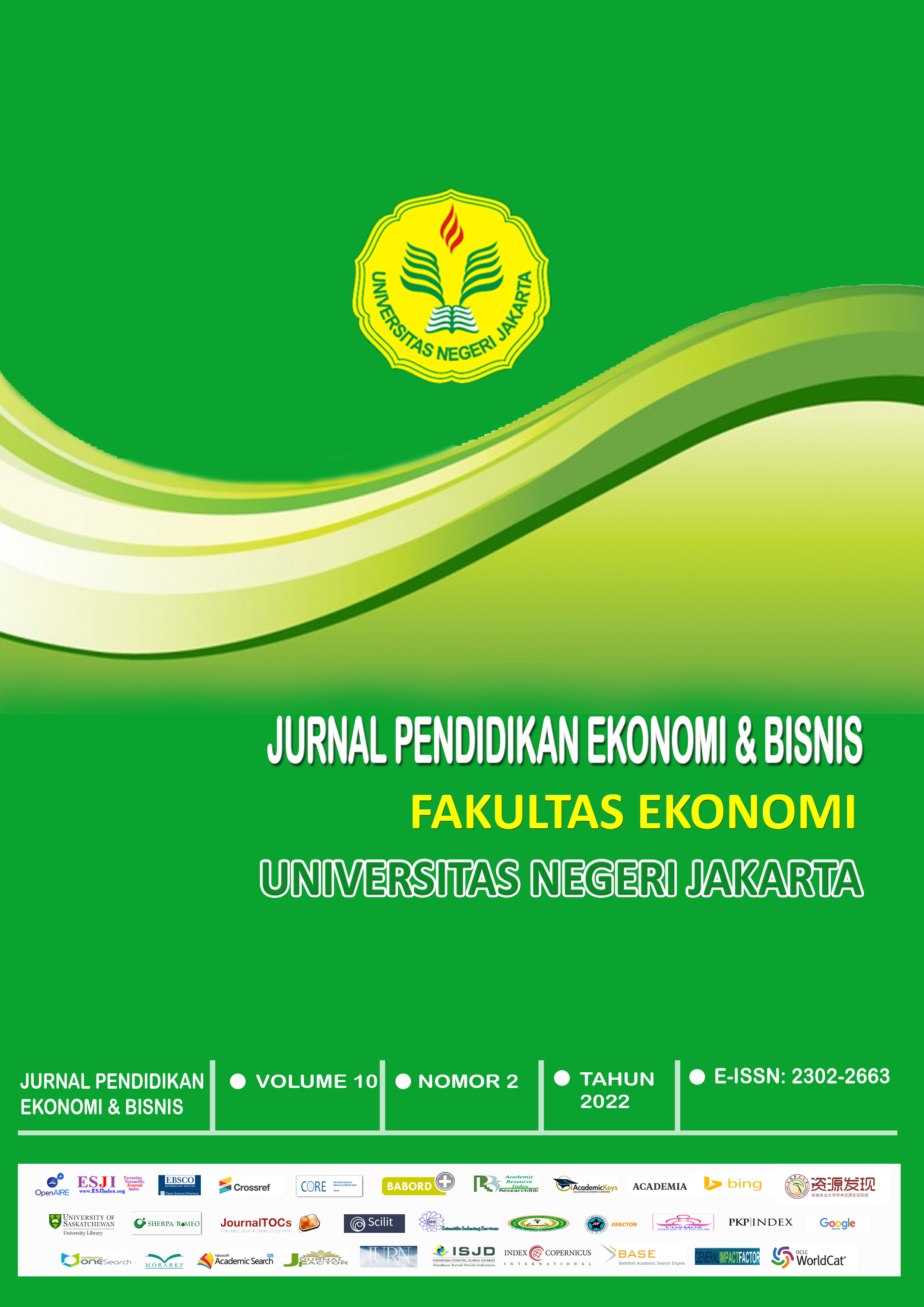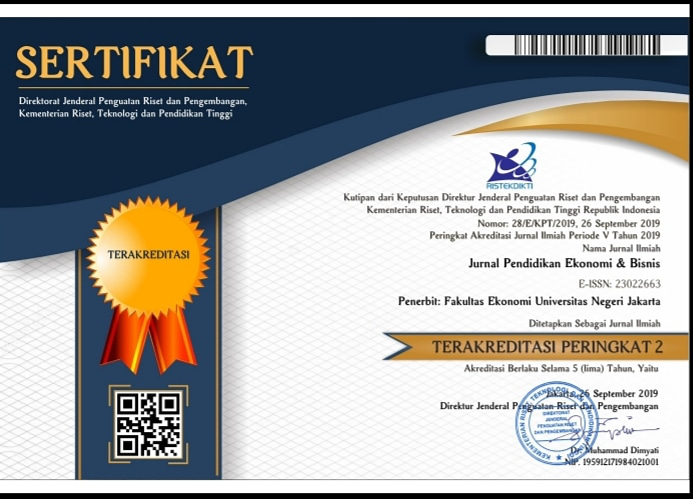Determinant Factors Driving Vocational Schools Students’ Intention to Use E-Learning
DOI:
https://doi.org/10.21009/JPEB.010.2.2Keywords:
Teacher Characteristics, Learning Design Contents, Playfulness, Perceived Usefulness, Perceived Ease of Use, Intention to Use E-learning EntrepreneurshipAbstract
The involvement of e-learning in entrepreneurship education has invited the attention of scholars in developed and developing countries throughout the Covid-19 pandemic. This paper examines the determinant factors driving intention to adopt e-learning entrepreneurship among vocational school students in Indonesia. A quantitative research method employed a survey model to explain in detail how the effect of endogenous variables on exogenous variables either directly or through moderator variables. A total of 430 vocational students in Jakarta of Indonesia were involved in this study and collected using the convenience technique. We are adopting Structural Equation Modeling (SEM-PLS) to estimate the proposed model. The findings indicate that teacher characteristic, learning content, playfulness, students’ perceived usefulness, and ease of use have a strong impact on the intention to use e-learning in entrepreneurship. The study also notes that variables perceived usefulness and perceived ease of use successfully moderated the effect of teacher characteristics, design of learning contents, and playfulness on the intention to use e-learning entrepreneurship. The findings of this research are the first step in studying the enactment of e-learning in entrepreneurship education.
Downloads
Published
How to Cite
Issue
Section
License
Articles in Jurnal Pendidikan Ekonomi & Bisnis are Open Access articles published under the Creative Commons CC BY-NC-SA License This license permits use, distribution and reproduction in any medium for non-commercial purposes only, provided the original work and source is properly cited. Any derivative of the original must be distributed under the same license as the original.








